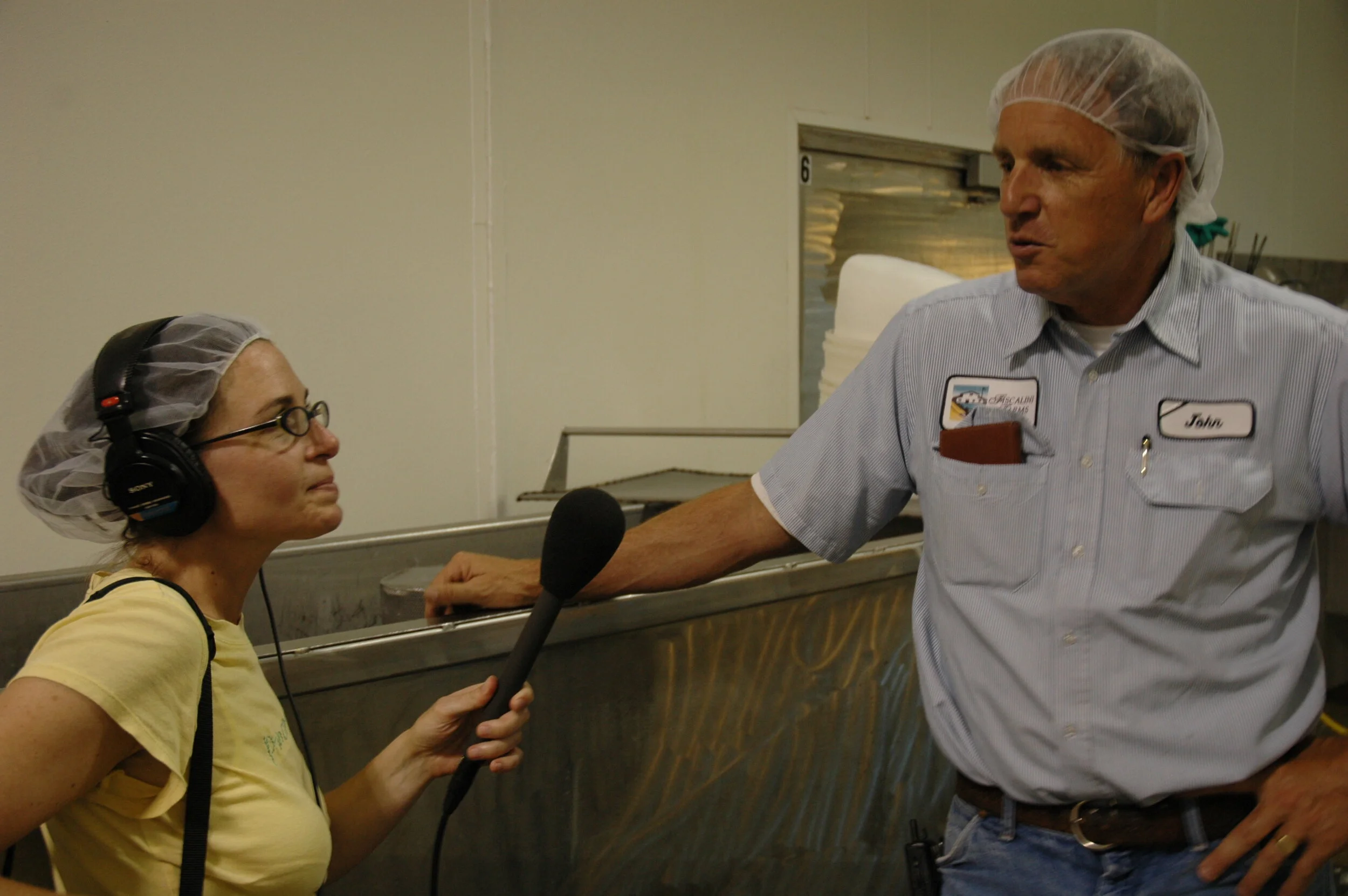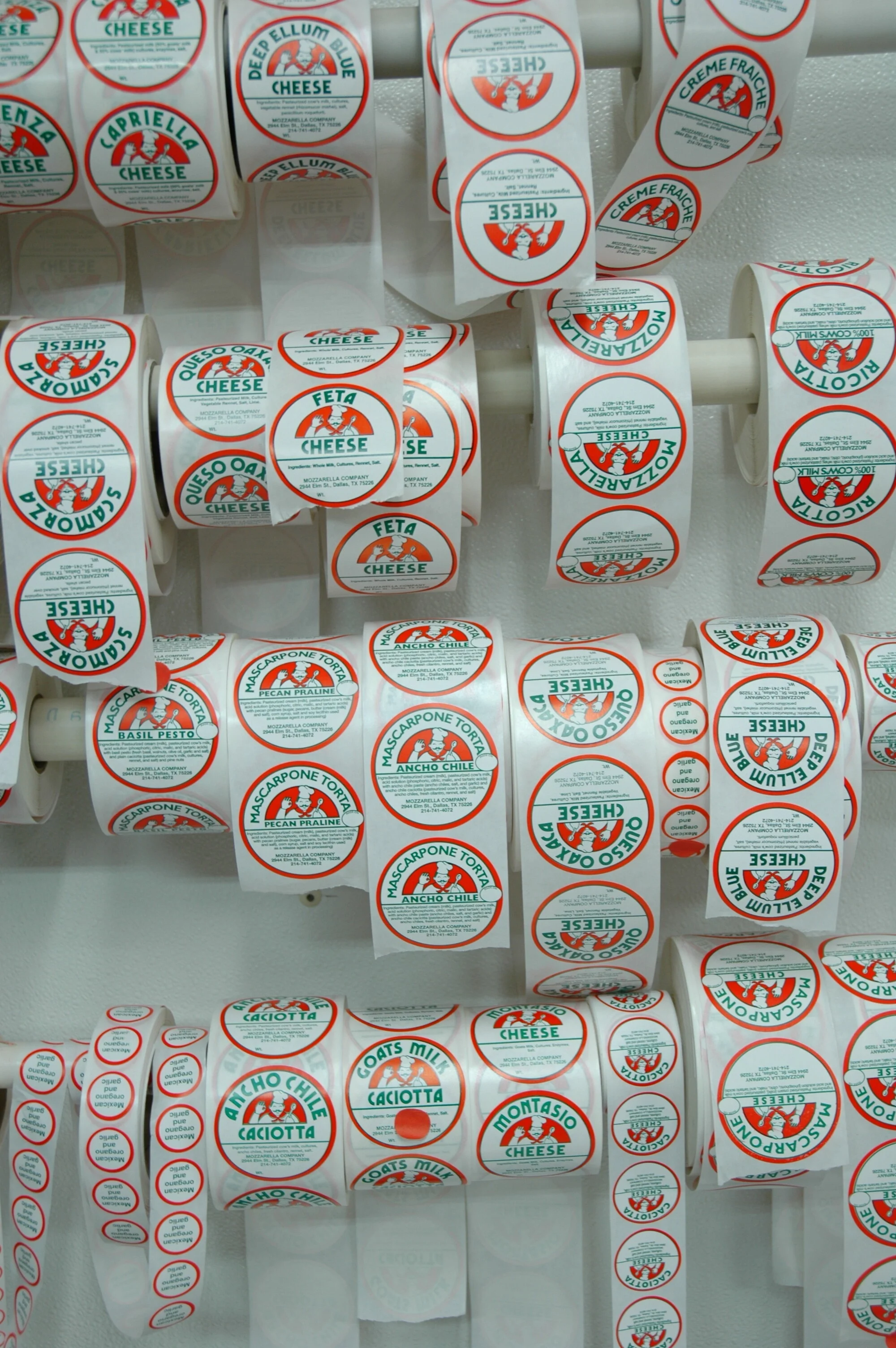Haystack Mountain Dairy: Colorado
June 2006
Name: Haystack Mountain Dairy
Owners: Jim Schott
Animals: Approximately 175 on-farm- including kids- (primarily Nubian and Saanen with some La Mancha thrown in) and milk from another herd of 800 in Colorado. As they plan for expansion, they have partnered with other farms who are raising their kids once they hit a certain age until they are settled at their new farm location (see below for more info).
Cheeses/Products: Chevre and Fromage (plain & flavored), Snowdrop, Haystack Peak, Haystack Feta, Queso de Mano, Sunlight, Red Cloud
Back in 1989, Jim and his family moved to Niwot, Colorado, purchased some land, bought five goats, and began milking them by hand to make cheese. After a long career in education, he was looking for a change of pace, dare I say a route towards retirement. The herd grew slowly, and by the time he got up to 25 goats he decided to go visit a few people that had been doing the goat cheese thing before he got in much deeper. When he began cheesemaking he had a staff of one- his daughter Gretchen. They worked together for a few years, growing the herd, developing their wholesale customer base, and participating in a staggering number of farmers' markets (13). Jim affectionately refers to those times as the "beer and chips days" because at the end of the day he and his daughter were so exhausted that the most they could do was slug back a beer and have some chips and salsa before bed...and then get up again the next morning for milking and cheesemaking.
We rolled into Boulder late on Wednesday afternoon, just in time to meet head cheesemaker Peter Kindall at the farmers' market so we could taste some Haystack Mtn cheeses and have a bite to eat. Cheese hearts broke all over New York when Peter and his wife Caroline decided to move to Boulder, Colorado. Both Peter and Caroline were very involved in the cheese community in NY, many of the people I know on the NYC cheese circuit feel that they learned much of what they know about cheese from Peter. The farmers' market in Boulder is kind of happenin' with the expected stands of bountiful farm products and a whole "food court" section- one thing NYC greenmarkets don't really offer (at least the Union Square one doesn't). Everything at the food court is served in biodegradable containers made from corn. It's such an odd feeling to throw everything, including your utensils, into the compost bin, but after reading the sign above the various bins multiple times, we agreed it was the right thing to do. Downtown Boulder is beautiful, so we wandered around with Peter and his son August for a couple of hours before heading out to the farm where we were staying with owner Jim Schott and his wife, Carol McLaren.
Pulling into the drive at Haystack Mountain was like setting off some crazy motion sensor alarm. Approximately seventy-five kids began bleating like mad as soon as we exited the car. Obligingly we walked over to their paddock to fuss over them. Carol walked out to greet us and shortly after that took us on a tour of the farm. Approximately 100 goats were being milked. The goats were separated into pens according to their milk production. In each pen they have ample room to loll about, ample water, shelter, and daily rations of alfalfa hay are delivered to them. There are a couple of other pens- one for the bucks, one for young kids, one for slightly older kids, and then also a nursery for the newborns (there was one that had been born that morning and oh my god was it ever tiny and so cute with its knobbly knees and crazy long ears). Carol also pointed out the mound of volcanic rubble in the distance, which is Haystack Mountain.
The milking parlor, milk room (bulk tank), cheesemaking and aging room are all housed within one structure. All of the raw milk cheese, and the two soft-ripened cheeses, made by Haystack is made in this facility on the farm. Fresh chevre and fromage, plain and flavored, are all produced at Haystack's creamery, which is located in Longmontmaybe 15 minutes by car from the farm. The milk for cheeses made at the creamery comes from other sources, which has allowed Haystack to increase their production considerably.
On our first morning, we hung out until Peter came by the farm- which he does so he can collect any cheeses needed for wholesale orders because all of them are boxed up and shipped from the creamery. We drove to the creamery with him making one short stop at the soon-to-be-new location of the farm. It is an 80 acre farm that has fallen to serious disrepair. Before the dairy can be moved, all the structures- including the meth-lab trailer- will need to be torn down and new structures built. Jim was able to negotiate a deal with Boulder county to get the land at a rate lower than the going development rate. Haystack Mountain is the only remaining dairy in the county and the majority of surrounding neighbors were in support which helped the deal go through smoothly. This move will enable Haystack to increase the herd on the farm to 800 goats over the next few years.
Seeing the future farm site was the first mention of the long-term goal to get Jim closer to the retirement he set out towards 17 years ago when he bought those first few goats. Peter put it best when he said, "Moving the dairy will get the Haystack business out of Jim's front yard and maybe it will finally allow him the space he needs from it to actually retire." Discussing the history of the farm with both Peter and Jim we learned that there have been a couple of critical decision points along the way where Jim might have been ready to slow down or not ready to make the next level of capital investment and that at each juncture like this the employees have voiced their desire to press on to the next step. A few years ago when Haystack hit a growing pain, a group of the employees wanted the company to continue badly enough that they invested in it and are now shareholders in the Dairy.
We moved on to the creamery where a staff of 6 were busy in the make room; bagging chevre set that morning, packing bulk containers of chevre for restaurants, smoking logs of chevre, labeling packaged cheeses, and packaging up orders. Peter gave us the official tour while we peppered him with questions about his own journeys in cheese. When the staff took a break for lunch, Michael and I busted out some cheeses from previous farm visits for them to sample. While they were snacking we got to hear about another huge new project that Haystack has on its plate. Pontotoc Area Vocational Technical School in Ada, Oklahoma contacted Haystack to ask if they would like to run the new dairy they were putting in on-site at the school. The dairy will employ six local people and all cheeses made in at the dairy will be Haystack Mountain products (in 2007 they will produce a line of Oklahoma cheeses) thus Haystack is sending one of their star cheesemakers, Sarah, to manage the dairy.
When we finished at the creamery we headed back to the farm to spend some time interviewing Jim. One thing that became clear when we were speaking to him is that he did not set out with the intention to expand even to where he is today let alone where the company is headed. Many of the farmstead cheesemakers we have met have articulated a conflict they feel about expanding into more distant U.S. markets. I think this might be something that many small business owners feel because their business has been built on selling their products to people they see and know to some extent; the idea of their product (especially a perishable consumable) going to an unknown customer base is almost too much of an abstraction. This is when we thank our lucky stars that someone like Jim has been at the helm of Haystack because he doesn't have sticky fingers on the controls, he is willing to guide the company with a degree of openness to the potential that his employees see. Speaking to him it becomes clear that this is not something he has tried to do rather it is a wonderful byproduct of the kind of individual he is. It pleases him to hear that his employees enjoy and are fulfilled by their work and yet he wouldn't ever take direct credit for having created that.
By the time we completed the interview we were ready for dinner and Jim and Carol took us into downtown Boulder to a local-focused restaurant called Kitchen. Kitchen is a place that everyone in the local food scene is excited about. One cool feature of the restaurant is the large blackboard displayed in the main dining room- it lists all the local farmers whose products are currently part of the menu.
The following morning Peter was making raw milk cheeses at the farm so we trailed around behind him in the make room while he worked. One of the wonderful things about Peter is that he is constantly pondering what makes a cheese come out the way it does; not the most basic science of it rather the nuances of each element that impacts the flavor of a cheese. We had a long discussion about the "goaty-ness" of goat's milk cheese and what people purport makes that happen and is it a good or bad thing to have goat cheese taste goaty? In his position at Haystack, Peter has had the pleasure of tinkering with existing processes and recipes and also developing additional cheeses. I found it incredibly interesting that he has focused on making new cheeses from the same basic "make" process. For example during the Queso de Mano make he pulls a small amount of curd off early (at a lower temperature than the final Queso de Mano curds) and puts it into smaller molds to make a washed-rind cheese called Red Cloud. Having traveled extensively throughout Europe to visit cheesemakers I think that Peter sort of fell in love with the elegance that simplicity (we might also call this efficiency) brings to cheesemaking and that it has become one of his guiding principles.
When we stood at the new farm site Peter encouraged us to take photos and to come back in 2-3 years and take photos again- twist my arm. He said it with a confidence that comes naturally when you know you are surrounded by the right people to accomplish what you've set out to do. I don't know about you all but in 2008 we're thinking about Cheese by Hand: Reloaded...










